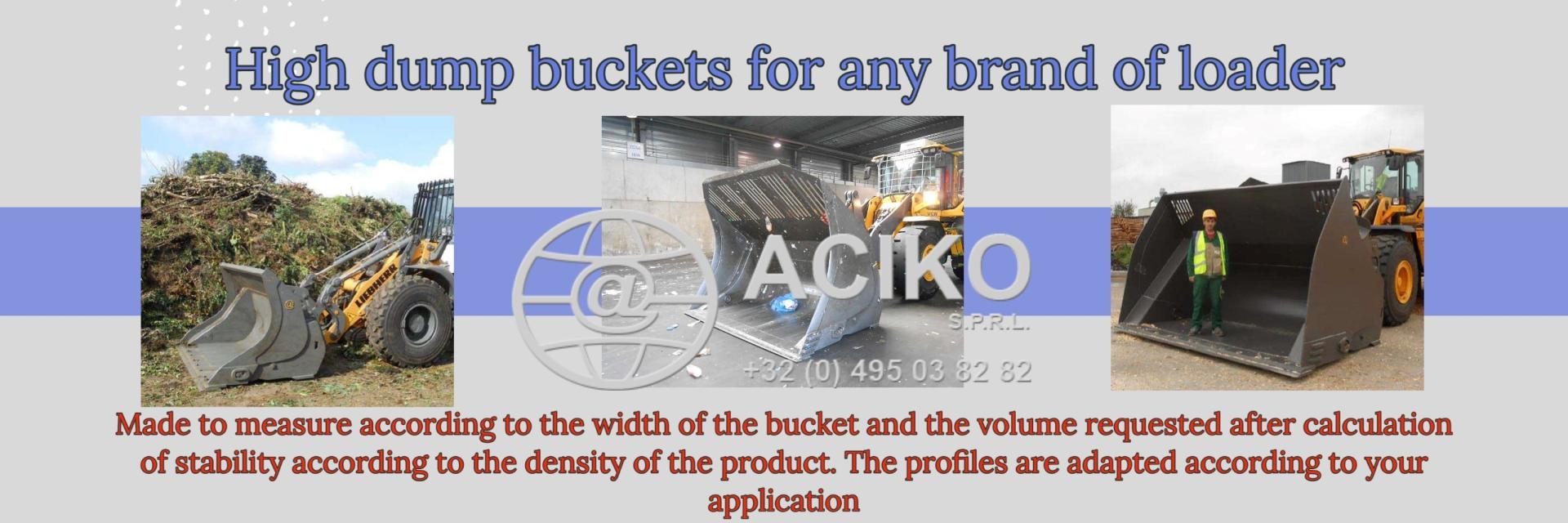R.E.News future Technology-Smart Vision Systems Redefine Building Load Analysis
 15/10/25-FR-English-NL-footer
15/10/25-FR-English-NL-footer
Quand la Vision Artificielle Redéfinit la Sécurité des Bâtiments
 Image- R.E.News©
Image- R.E.News©
Dans le monde silencieux mais vital du génie civil, la sécurité structurelle repose sur un principe immuable : connaître les charges que supporte un bâtiment, à chaque instant.
Pendant des décennies, les ingénieurs ont tenté d’estimer ces forces invisibles — les charges d’exploitation, ces poids que représentent les personnes, les meubles, ou les mouvements dans un espace.
Mais un défi persistait : les charges extraordinaires, ces poussées brèves et intenses provoquées par une foule dense, un événement, ou un aménagement temporaire.
Jusqu’à présent, leur mesure relevait presque de l’artisanat.
Entre enquêtes manuelles, entretiens d’occupants et observations empiriques, les données restaient fragmentaires, subjectives, et souvent éloignées de la réalité dynamique d’un bâtiment vivant.
Aujourd’hui, une équipe de chercheurs de la Tongji University, de China United Engineering Co. Ltd., et du Shanghai Research Institute of Building Sciences Co. Ltd. change la donne.
Leur étude, intitulée “Vision-based Survey Method for Extraordinary Loads on Buildings”, propose une révolution discrète mais profonde : utiliser l’intelligence artificielle et la vision par ordinateur pour observer, mesurer et comprendre comment nos bâtiments vivent, respirent… et supportent nos mouvements.
Au-delà des méthodes d’hier
Dans l’ingénierie structurelle, la charge d’exploitation influence tout : la conception, les marges de sécurité, la longévité.
Les charges permanentes — mobilier, occupation standard — sont relativement prévisibles. Mais les charges extraordinaires ?
Elles surgissent soudainement : une foule compacte dans un hall, des visiteurs qui affluent lors d’une exposition, un entrepôt réorganisé.
Longtemps, les ingénieurs ont tenté d’en cerner les effets à travers des sondages ou des observations de terrain. Mais ces méthodes, lentes et humaines, passaient à côté de l’essentiel : la dynamique — le mouvement, la vibration, la densité changeante.
Autrement dit, les bâtiments étaient conçus sur des estimations, pas sur des faits.
L’œil numérique au service de la structure
Les chercheurs menés par Tongji proposent une autre approche : laisser les bâtiments s’observer eux-mêmes.
En s’appuyant sur les systèmes de vidéosurveillance déjà en place, leur méthode transforme de simples flux vidéo en une mine d’informations structurelles.
Au cœur du dispositif : un modèle d’IA de suivi de têtes dans la foule, fondé sur des réseaux de neurones convolutionnels (CNN).
Ce système combine deux compétences essentielles : la détection et la ré-identification.
Il reconnaît, suit et différencie des individus même dans les groupes les plus denses, traçant leurs trajectoires avec une précision étonnante.
De ces mouvements, le système extrait deux données clés :
la quantité de personnes,
leur vitesse de déplacement.
En les combinant, il calcule un facteur de charge dynamique équivalent — une mesure jusqu’ici quasi impossible à obtenir.
Ainsi, dans un centre commercial, un auditorium ou une gare, l’IA peut évaluer en temps réel l’impact physique d’une foule sur la structure du bâtiment.
Des résultats qui parlent d’eux-mêmes
Pour valider cette approche, les chercheurs ont mené deux grandes expérimentations :
une analyse de densité de foule et une expérience de marche collective.
Les résultats sont impressionnants :
95,4 % de précision pour la détection des têtes,
88,2 % de précision moyenne (mAP) et 96,7 % de réussite au premier rang pour la ré-identification,
et un facteur dynamique capable de refléter avec justesse les conditions réelles d’usage.
En d’autres termes, les bâtiments peuvent désormais raconter leur propre histoire, seconde après seconde, mouvement après mouvement.
Des bâtiments plus intelligents, sans infrastructures supplémentaires
L’un des atouts majeurs de cette innovation est sa simplicité d’intégration.
La plupart des immeubles modernes — bureaux, stades, campus — sont déjà dotés de caméras de sécurité.
Il suffit d’y greffer ces modèles d’IA pour transformer un système de surveillance en outil d’ingénierie structurelle avancé.
Les bénéfices sont immédiats :
Suivi continu plutôt que relevé ponctuel,
Précision accrue et élimination des biais humains,
Analyse dynamique des charges réelles,
Coûts d’installation réduits grâce à l’usage d’équipements existants.
Dans des environnements où la fréquentation fluctue — aéroports, écoles, immeubles de grande hauteur — ces données deviennent une ressource précieuse pour prévenir les risques, anticiper les pics de charge, et ajuster la conception des espaces.
L’ingénierie entre dans l’ère du comportement
Au-delà de la technique, cette approche transforme la philosophie même du design architectural.
Grâce à la vision artificielle, les bâtiments cessent d’être des structures figées : ils deviennent des organismes observables, mesurables, adaptatifs.
Les ingénieurs peuvent désormais concevoir en s’appuyant sur des données comportementales réelles plutôt que sur des hypothèses statistiques.
Cela alimente le mouvement du Performance-Based Design (PBD) — une conception basée sur les performances réelles, non théoriques.
Et, couplée à la modélisation BIM et aux jumeaux numériques, cette méthode ouvre la voie à une conception prédictive, précise et durable.
L’impact environnemental suit la même logique :
une meilleure connaissance des charges permet d’éviter la surconception, donc d’économiser des matériaux et de réduire l’empreinte carbone.
La voix des chercheurs
“Le manque de données fiables sur les charges extraordinaires a longtemps été un obstacle à une conception vraiment réaliste,” explique Yang Li, auteur principal.
“Grâce à la vision artificielle, nous rapprochons enfin la modélisation théorique de la vie réelle.”
Pour Jun Chen, co-auteur chez China United Engineering, “ce n’est pas une simple automatisation, c’est une transformation. Nous pouvons désormais observer les dynamiques humaines à une échelle et une précision inédites.”
Ces déclarations ne laissent aucun doute : cette technologie pourrait devenir le nouveau standard mondial pour la collecte et l’analyse des données structurelles.
L’avenir du bâti intelligent
Cette avancée ne se limite pas aux bâtiments : elle esquisse la silhouette de villes plus intelligentes, plus sûres et plus réactives.
En reliant les comportements humains à la performance structurelle, la vision artificielle devient un instrument d’urbanisme prédictif.
Demain, nos infrastructures sauront anticiper les flux, s’adapter aux usages, et prévenir les risques avant qu’ils ne se manifestent.
L’IA n’est plus une promesse lointaine : elle devient le regard vigilant de nos constructions, veillant sur nous à chaque pas.
Parce que dans la ville de demain, la sécurité ne sera plus une estimation — mais une donnée vivante.
NJC.© Info Vision-based Survey Method for Extraordinary Loads on Buildings
-------------------------------------------------------------------------------------------------------------------
 15/10/25-English
15/10/25-English
When Artificial Vision Redefines Building Safety
 Image- R.E.News©
Image- R.E.News©
In the silent but vital world of civil engineering, structural safety is based on an immutable principle: knowing the loads a building is supporting, at all times.
For decades, engineers have attempted to estimate these invisible forces—live loads, the weights of people, furniture, or movement within a space.
But one challenge persisted: extraordinary loads, those brief, intense surges caused by a dense crowd, an event, or a temporary development.
Until now, measuring them was almost a craft.
Between manual surveys, occupant interviews, and empirical observations, the data remained fragmented, subjective, and often far removed from the dynamic reality of a living building.
Today, a team of researchers from Tongji University, China United Engineering Co. Ltd., and the Shanghai Research Institute of Building Sciences Co. Ltd. is changing this. Their study, entitled “Vision-based Survey Method for Extraordinary Loads on Buildings,” proposes a discreet but profound revolution: using artificial intelligence and computer vision to observe, measure, and understand how our buildings live, breathe… and support our movements.
Beyond yesterday's methods
In structural engineering, live load influences everything: design, safety margins, longevity.
Permanent loads—furniture, standard occupancy—are relatively predictable. But extraordinary loads?
They appear suddenly: a dense crowd in a hall, visitors flocking to an exhibition, a reorganized warehouse.
For a long time, engineers tried to understand their effects through surveys or field observations. But these slow and human-based methods missed the essential point: dynamics—movement, vibration, changing density.
In other words, buildings were designed based on estimates, not facts.
The digital eye at the service of the structure
Researchers led by Tongji propose another approach: letting buildings observe themselves.
By leveraging existing video surveillance systems, their method transforms simple video streams into a wealth of structural information.
At the heart of the system: an AI model for tracking heads in crowds, based on convolutional neural networks (CNNs).
This system combines two essential skills: detection and re-identification.
It recognizes, tracks, and differentiates individuals even in the densest groups, tracing their trajectories with astonishing precision.
From these movements, the system extracts two key pieces of data:
the number of people,
their speed of movement.
By combining them, it calculates an equivalent dynamic load factor—a measurement that was previously nearly impossible to obtain.
Thus, in a shopping center, an auditorium, or a train station, AI can assess in real time the physical impact of a crowd on the building structure.
Results that speak for themselves
To validate this approach, the researchers conducted two major experiments:
a crowd density analysis and a group walking experiment.
The results are impressive:
95.4% accuracy for head detection,
88.2% average mean accuracy (mAP) and 96.7% first-place success for re-identification,
and a dynamic factor capable of accurately reflecting real-life usage conditions.
In other words, buildings can now tell their own story, second by second, movement by movement.
Smarter buildings, without additional infrastructure
One of the major advantages of this innovation is its ease of integration.
Most modern buildings—offices, stadiums, campuses—are already equipped with security cameras.
Simply adding these AI models to them transforms a surveillance system into an advanced structural engineering tool.
The benefits are immediate:
Continuous monitoring rather than one-off readings,
Increased accuracy and elimination of human bias,
Dynamic analysis of actual loads,
Reduced installation costs thanks to the use of existing equipment.
In environments where traffic fluctuates—airports, schools, high-rise buildings—this data becomes a valuable resource for preventing risks, anticipating peak loads, and adjusting space design.
Engineering Enters the Age of Behavior
Beyond technology, this approach transforms the very philosophy of architectural design.
Thanks to computer vision, buildings cease to be fixed structures: they become observable, measurable, and adaptive organisms.
Engineers can now design based on real behavioral data rather than statistical assumptions.
This is fueling the Performance-Based Design (PBD) movement—a design based on real, not theoretical, performance.
And, coupled with BIM modeling and digital twins, this method paves the way for predictive, accurate, and sustainable design.
The environmental impact follows the same logic:
better knowledge of loads helps avoid overdesign, thus saving materials and reducing the carbon footprint.
The researchers' voice
“The lack of reliable data on extraordinary loads has long been an obstacle to truly realistic design,” explains Yang Li, lead author. “Thanks to computer vision, we are finally bringing theoretical modeling closer to real life.”
For Jun Chen, co-author at China United Engineering, “this isn’t just automation, it’s transformational. We can now observe human dynamics at an unprecedented scale and precision.”
These statements leave no doubt: this technology could become the new global standard for collecting and analyzing structural data.
The Future of Smart Buildings
This advancement isn’t limited to buildings: it’s outlining smarter, safer, and more responsive cities.
By linking human behavior to structural performance, computer vision is becoming a predictive urban planning tool.
Tomorrow, our infrastructure will be able to anticipate flows, adapt to usage, and prevent risks before they occur.
AI is no longer a distant promise: it is becoming the watchful eye of our buildings, watching over us at every step.
Because in the city of tomorrow, safety will no longer be an estimate—it will be a living fact.
NJC.© Info Vision-based Survey Method for Extraordinary Loads on Buildings
---------------------------------------------------------------------------------------------------------
 15/10/25-NL
15/10/25-NL
Wanneer kunstmatige visie de veiligheid van gebouwen herdefinieert
 Image- R.E.News©
Image- R.E.News©
In de stille maar vitale wereld van de civiele techniek is structurele veiligheid gebaseerd op een onveranderlijk principe: te allen tijde de belasting kennen die een gebouw draagt.
Al decennia lang proberen ingenieurs deze onzichtbare krachten te schatten – levende belastingen, het gewicht van mensen, meubilair of bewegingen in een ruimte.
Maar één uitdaging bleef bestaan: buitengewone belastingen, die korte, intense schommelingen veroorzaakt door een dichte menigte, een gebeurtenis of een tijdelijke ontwikkeling.
Tot nu toe was het meten ervan bijna een ambacht.
Tussen handmatige metingen, interviews met bewoners en empirische observaties bleven de gegevens gefragmenteerd, subjectief en vaak ver verwijderd van de dynamische realiteit van een levend gebouw.
Vandaag brengt een team van onderzoekers van Tongji University, China United Engineering Co. Ltd. en het Shanghai Research Institute of Building Sciences Co. Ltd. hier verandering in. Hun onderzoek, getiteld "Vision-based Survey Method for Extraordinary Loads on Buildings", stelt een discrete maar diepgaande revolutie voor: het gebruik van kunstmatige intelligentie en computer vision om te observeren, meten en begrijpen hoe onze gebouwen leven, ademen... en onze bewegingen ondersteunen.
Voorbij de methoden van gisteren
In de bouwkunde beïnvloedt de levende belasting alles: ontwerp, veiligheidsmarges, levensduur.
Permanente belastingen – meubilair, standaardbezetting – zijn relatief voorspelbaar. Maar buitengewone belastingen?
Ze verschijnen plotseling: een dichte menigte in een hal, bezoekers die massaal naar een tentoonstelling stromen, een gereorganiseerd magazijn.
Ingenieurs probeerden lange tijd de effecten ervan te begrijpen door middel van metingen of veldobservaties. Maar deze trage en op mensen gebaseerde methoden misten de essentie: dynamiek – beweging, trillingen, veranderende dichtheid.
Met andere woorden, gebouwen werden ontworpen op basis van schattingen, niet van feiten.
Het digitale oog ten dienste van de constructie
Onderzoekers onder leiding van Tongji stellen een andere aanpak voor: gebouwen zichzelf laten observeren. Door gebruik te maken van bestaande videobewakingssystemen, transformeert hun methode eenvoudige videostreams in een schat aan structurele informatie.
De kern van het systeem: een AI-model voor het volgen van hoofden in menigten, gebaseerd op convolutionele neurale netwerken (CNN's).
Dit systeem combineert twee essentiële vaardigheden: detectie en heridentificatie.
Het herkent, volgt en onderscheidt individuen, zelfs in de dichtstbevolkte groepen, en traceert hun trajecten met verbluffende precisie.
Uit deze bewegingen haalt het systeem twee belangrijke gegevens:
het aantal mensen,
hun bewegingssnelheid.
Door deze te combineren, berekent het een equivalente dynamische belastingsfactor – een meting die voorheen vrijwel onmogelijk was.
Zo kan AI in een winkelcentrum, een auditorium of een treinstation in realtime de fysieke impact van een menigte op de gebouwstructuur beoordelen.
Resultaten die voor zich spreken
Om deze aanpak te valideren, voerden de onderzoekers twee grote experimenten uit:
een analyse van de menigtedichtheid en een experiment met groepswandelen. De resultaten zijn indrukwekkend:
95,4% nauwkeurigheid voor hoofddetectie,
88,2% gemiddelde nauwkeurigheid (mAP) en 96,7% eerste plaats succes voor heridentificatie,
en een dynamische factor die de werkelijke gebruiksomstandigheden nauwkeurig kan weergeven.
Met andere woorden, gebouwen kunnen nu hun eigen verhaal vertellen, seconde na seconde, beweging na beweging.
Slimmere gebouwen, zonder extra infrastructuur
Een van de belangrijkste voordelen van deze innovatie is de eenvoudige integratie.
De meeste moderne gebouwen – kantoren, stadions, campussen – zijn al uitgerust met beveiligingscamera's.
Door simpelweg deze AI-modellen toe te voegen, transformeert een bewakingssysteem in een geavanceerde tool voor bouwkunde.
De voordelen zijn direct merkbaar:
Continue monitoring in plaats van eenmalige metingen,
Verhoogde nauwkeurigheid en eliminatie van menselijke vooroordelen,
Dynamische analyse van werkelijke belastingen,
Lagere installatiekosten dankzij het gebruik van bestaande apparatuur.
In omgevingen waar het verkeer fluctueert – luchthavens, scholen, hoogbouw – vormen deze gegevens een waardevolle bron voor het voorkomen van risico's, het anticiperen op piekbelastingen en het aanpassen van ruimteontwerpen.
Engineering betreedt het tijdperk van gedrag
Voorbij de technologie transformeert deze aanpak de filosofie van architectonisch ontwerp.
Dankzij computer vision zijn gebouwen geen vaste structuren meer: ze worden waarneembare, meetbare en adaptieve organismen.
Ingenieurs kunnen nu ontwerpen op basis van echte gedragsgegevens in plaats van statistische aannames.
Dit voedt de Performance-Based Design (PBD)-beweging – een ontwerp gebaseerd op echte, niet theoretische, prestaties.
En, in combinatie met BIM-modellering en digitale tweelingen, maakt deze methode de weg vrij voor voorspellend, nauwkeurig en duurzaam ontwerp.
De milieu-impact volgt dezelfde logica:
betere kennis van belastingen helpt overontwerp te voorkomen, waardoor materiaal wordt bespaard en de CO2-voetafdruk wordt verkleind.
De stem van de onderzoekers
"Het gebrek aan betrouwbare gegevens over buitengewone belastingen vormt al lange tijd een obstakel voor echt realistisch ontwerp", legt Yang Li, hoofdauteur, uit. "Dankzij computer vision brengen we theoretische modellen eindelijk dichter bij de praktijk."
Voor Jun Chen, coauteur bij China United Engineering, "is dit niet zomaar automatisering, het is transformationeel. We kunnen nu menselijke dynamiek observeren op een ongekende schaal en precisie."
Deze uitspraken laten er geen twijfel over bestaan: deze technologie zou de nieuwe wereldwijde standaard kunnen worden voor het verzamelen en analyseren van structurele data.
De toekomst van slimme gebouwen
Deze vooruitgang beperkt zich niet tot gebouwen: het schetst slimmere, veiligere en responsievere steden.
Door menselijk gedrag te koppelen aan structurele prestaties, wordt computer vision een voorspellende tool voor stedenbouw.
Morgen zal onze infrastructuur in staat zijn om te anticiperen op stromen, zich aan te passen aan het gebruik en risico's te voorkomen voordat ze zich voordoen.
AI is niet langer een belofte in de verre toekomst: het wordt het waakzame oog van onze gebouwen en waakt over ons bij elke stap.
Want in de stad van morgen zal veiligheid niet langer een schatting zijn, maar een levend feit.
NJC.© Info Vision-based Survey Method for Extraordinary Loads on Buildings
-----------------------------------------------------------------------------------------------------------------
Date de dernière mise à jour : 14/10/2025
















